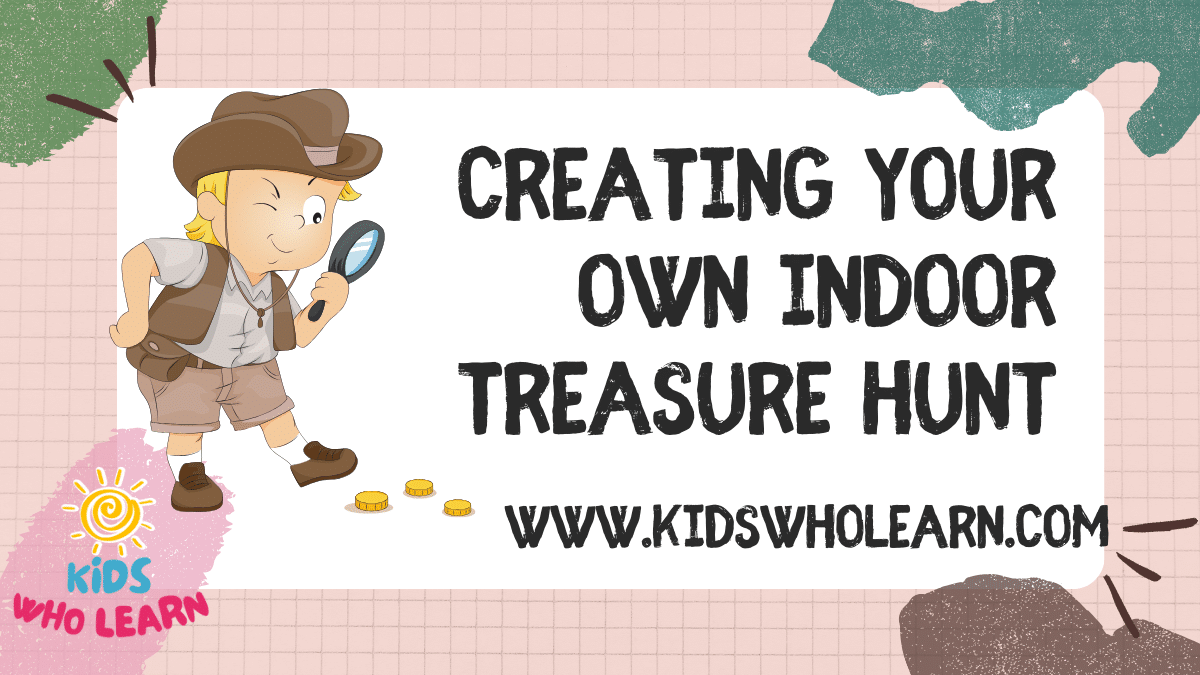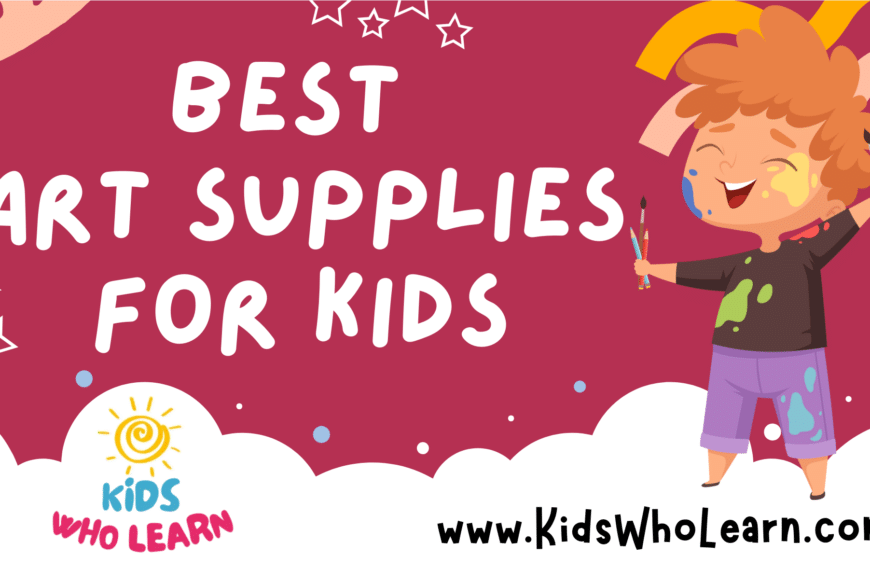Indoor treasure hunts present an engaging way to add excitement and a touch of adventure to your home life. Whether it’s for a family gathering, a children’s birthday party, or simply to spice up an ordinary weekend, creating your own treasure hunt is a creative and fun endeavor. By designing a series of clues and challenges, you can transform your living space into a mysterious labyrinth full of secrets to uncover and treasures to discover.
To craft the perfect treasure hunt within your home, you begin by establishing a theme and storyline that captivates the participants’ imaginations. The success of the treasure hunt hinges on careful planning, including plotting the course, hiding clues in strategic locations, and ensuring the flow of the game leads adventurers on a coherent and fulfilling journey. You take into account the ages of the participants and any educational elements you wish to incorporate, enhancing the experience’s value and ensuring that it’s accessible to all involved.
Executing the treasure hunt requires attention to detail and the ability to think on your feet—be prepared to adapt as the hunt progresses. After the excitement, consider including post-hunt activities that allow participants to reflect on their adventure and share their experiences. It’s essential to prioritize safety throughout the event, making sure that the environment is hazard-free and that all challenges are age-appropriate.
Key Takeaways
- Planning a captivating theme and storyline is essential for an engaging treasure hunt.
- Successful execution involves strategic clue placement and tailoring the hunt to participants’ ages.
- Post-hunt activities and safety considerations enhance the overall experience.
Foundations of Treasure Hunting
In preparing your indoor treasure hunt, you need to understand its core concepts and establish clear goals to ensure success.
Understanding Treasure Hunts
Treasure hunts are structured games that involve searching for hidden items or locations within a defined area, such as your home. Typically suited for kids and adults alike, an indoor treasure hunt can transform a familiar space into an exciting adventure zone. The fundamental structure of a hunt involves clues leading participants from one point to another until they discover the treasure. There are different types of indoor hunts, from classic scavenger hunts where players collect specific items to photo hunts that require taking pictures of found items.
- Types of Indoor Hunts:
- Classic Scavenger Hunt: Collecting items on a list.
- Photo Hunt: Taking photos of items or scenes.
- Quest-Style Hunt: Completing tasks or challenges.
The success of these hunts relies on teamwork and problem-solving skills, necessitating cooperation among players to decipher clues and strategize their search.
Setting Your Treasure Hunt Goals
When planning your indoor treasure hunt, it’s important to set specific goals to shape the experience. Are you focusing on entertainment, education, or competition? This will influence the design of your clues and the flow of the hunt.
- Goals to Consider:
- Entertainment: Create a lighthearted, fun experience.
- Education: Incorporate learning objectives into the hunt.
- Competition: Encourage a competitive spirit with challenges and prizes.
Tailoring the complexity of the clues and the nature of the treasure hunt to your audience ensures that the game remains engaging and appropriate for the participants. For example, when organizing a hunt for kids, your clues might involve simple riddles or picture-based hints to keep them engaged and motivated.
Planning Your Indoor Treasure Hunt
Planning your indoor treasure hunt requires thoughtful preparation to ensure it’s engaging and fun. Pay attention to selecting a cohesive theme, determining the extent of your adventure, and crafting clever clues and riddles that will captivate your participants.
Choosing a Theme
Selecting a theme is essential as it sets the stage for your treasure hunt. Popular themes include:
- Pirates: You become the captain of a living room schooner searching for hidden gold.
- Fairies: Transform your space into an enchanted garden where magical treasures await.
- Detectives: Turn participants into sleuths, decoding messages and uncovering secrets.
Remember, your theme will influence the design of your clues and the ambiance of your treasure hunt, so choose one that sparks your imagination.
Determining the Scope
To decide the scope of your treasure hunt:
- Set Boundaries: Clearly define the play area to keep hunters safe and the game controlled.
- Decide Duration: A single round can last from 10 minutes to an hour, depending on the complexity and age of players.
- Change: Be prepared to adapt the scope based on the number of participants and their engagement levels.
Assembling Clues and Riddles
Crafting clues and riddles is the heart of your treasure hunt. They should be:
- Challenging Yet Solvable: Balance difficulty to maintain interest without causing frustration.
- Thematic: Ensure that each clue and riddle fits within your chosen theme for consistency.
- Varied: Incorporate different types of clues, such as maps, anagrams, or cryptic messages, to keep hunters on their toes.
When constructing your riddles, employ your creativity to integrate them seamlessly into the narrative of your adventure.
Preparation and Setup
Proper preparation and setup are the cornerstones of creating an engaging indoor treasure hunt. Careful attention to detail in crafting clues and choosing the ideal location will ensure a challenging and enjoyable experience.
Creating the Clues
Your clues are the heartbeat of the treasure hunt, guiding participants from one spot to the next. Clarity and ingenuity are essential in crafting these hints. Consider using riddles that relate to the specific spots you’ve chosen inside the house. For instance, a clue leading to a bookshelf might read:
- I’m filled with spines but devoid of bones. I populate homes and am silent alone. What am I?
To add a visual element, picture clues can be an engaging alternative. These can either be photographs or hand-drawn images signaling the next location. If possible, use a camera or smartphone to create a photo hunt by providing snapshots that hint at particular items or corners of the room, like a patterned kitchen tile or a unique ornament on a shelf.
For a more interactive approach, iSimple clues—inexpensive, easy riddles or puzzles—are ideal for keeping participants intrigued without requiring elaborate setup. Keep each clue concise to maintain a fast-paced game.
Selecting the Perfect Location
The location of your scavenger hunt should be safe and suitable for the age group of your participants. Ensure there’s enough space to move around without creating clutter. The kitchen can serve as an excellent starting point due to its familiarity and the presence of many hiding spots, like drawers and cabinets. Look for key spots that match the clues you’ve created, for example:
- Kitchen: Hide clues in a recipe book or tape one to the bottom of a chair.
- Bookshelf: Tuck clues between pages or place them behind family photos.
Remember to scan the area for any delicate items that could be accidentally damaged during the hunt. Remove these items or mark them as ‘out of bounds’ to avoid any mishaps. Make sure each location subtly stands out to give participants a sense of direction without making it too obvious, striking a balance between challenge and enjoyability.
Executing the Indoor Treasure Hunt
When executing your indoor treasure hunt, it’s essential to create a seamless experience from start to finish. Make sure the starting point is clearly marked and that participants have the necessary tools, such as a compass or clues, to navigate through the hunt.
Initiating the Hunt
Begin by gathering all participants at the starting point. Here, provide each team or individual with their first clue. Ensure these clues are clear and instruct them to use teamwork, which is crucial in a successful indoor hunt. You could also offer a camera for teams to document their adventure.
Guiding the Participants
As participants move along the path, make sure your instructions guide them from one point to the next in a logical sequence. You can use stickers or small prize items like candy at each clue location to keep kids excited and motivated. Temporary directional signs or different colored tapes on the floor can also help guide hunters without giving away too much.
Concluding with Prizes and Rewards
At the end of the hunt, have a collection of prizes ready for participants. Small toys, books, or extra sweets can serve as the primary rewards. Remember to celebrate everyone’s involvement to encourage a sense of accomplishment and teamwork. Thanking everyone for their participation with a physical or verbal token can leave a lasting positive impression.
Post-Hunt Activities
After the excitement of the indoor treasure hunt, take the time to come together and reflect on the experience.
Reflection and Learnings
Engage in a post-hunt discussion to solidify teamwork lessons and to review the rules that made the game fair and fun. Consider how the challenges of each round fostered collaboration or strategy.
- Discuss what strategies worked well and what could be improved.
- Reflect on specific stages of the hunt where the map was crucial to locating prizes.
Sharing Memories
Commemorate the event by sharing photos taken during the hunt. Whether it’s on Instagram or in a family album, these memories are a treasure in themselves.
- Share individual or team photos with the prizes.
- Create a digital or physical photo album as a memento for all participants, highlighting key moments and successful teamwork.
Encourage parents and participants to contribute their favorite snapshots to collect a wide array of perspectives from the event.
Adapting Treasure Hunts for Various Ages
Treasure hunts provide dynamic entertainment that can be tailored to participants of any age. By modifying the complexity of clues and themes, you can create an engaging activity that is age-appropriate and encourages development of problem-solving and teamwork skills.
Treasure Hunts for Preschoolers
For preschoolers, your treasure hunt should focus on simple, playful, and educational elements. Opt for a:
- Picture Hunt: Use images as clues, which supports their recognition skills.
- Visual Themes: Animals, colors, shapes.
- Simple Directions: “Find the teddy bear under a blue chair.”
Prizes for preschoolers:
- Stickers, small toys, or healthy treats.
Be sure teamwork is facilitated through group activities to foster social skills.
Challenges for Older Kids and Adults
Older children and adults can handle more complex treasure hunts that involve:
- Riddles: Crafting clever riddles that challenge their thinking.
- Use books, historical facts, or science concepts.
- Scavenger Hunt Ideas: Integrate scavenger hunt elements by including a list of items to collect or tasks to complete.
- Thematic Directions: Create stories or themes; for example, a pirate adventure or a mystery case.
Team competition can be amplified with:
- Time limits or staggered starts.
- Team vs. team challenges to instigate light-hearted competition.
Include prizes that reflect the effort, like movie tickets or gift certificates for adults, whereas for kids, consider collectibles or books related to the treasure hunt theme.
Incorporating Educational Elements
Your indoor treasure hunt isn’t just fun; it’s an opportunity to create an immersive educational experience. By weaving in various educational elements, you can challenge participants intellectually while they’re on their quest.
Science and Exploration
Materials Required:
- Compass
- Magnifying glass
- Various household items
Activity:
- Orientation Skills: Use a compass for directional clues. Have participants follow compass points from one clue to the next, which will not only hone their navigational skills but also their understanding of Earth’s cardinal points.
- Scientific Observation: Challenge players to match close-up images of textures or patterns of objects around the house—like a wood grain on the bookshelf—to their larger context, encouraging a scientist’s keen eye for detail.
Literacy and Problem-Solving
Tools Needed:
- Paper
- Pens
- Books
Engagements:
- Anagrams/Riddles: Create anagrams from the titles or authors of books on your bookshelf, or use book content to formulate riddles.
- Clue Crafting: Develop clues that require reading passages from different books to find the next lead. This strengthens not only reading comprehension but also deductive reasoning as they decipher the hints.
Adjusting to Different Environments
Crafting an engaging treasure hunt hinges on tailoring the experience to your chosen venue, whether it’s the confines of your home or the expansiveness of the outdoors. Both environments necessitate a distinct approach to maintain intrigue and fairness.
Indoor Versus Outdoor Hunts
When you design an indoor scavenger hunt, take advantage of the distinct spaces within your home. Utilize your kitchen for riddles relating to cooking or baking, perhaps hiding clues in the dishwasher or tucked away in the pantry. Your refrigerator might serve as an excellent spot for cold-related puzzles.
In contrast, outdoor hunts, subject to weather changes, require a broader scope. Scatter clues throughout your garden, under benches, or hang them from trees. However, ensure they’re weatherproof to avoid spoiling the game.
| Environment | Advantages | Challenges |
|---|---|---|
| Indoor | Control over the setting. | Limited space can increase difficulty. |
| Outdoor | More space and natural features. | Weather dependence. |
Using Technology and Digital Tools
Embrace technology to enhance your treasure hunt experiences. For indoor scavenger hunts, use a camera to create a photo hunt, where participants snap pictures of items found on their list. You can also leverage apps to create a digital checklist or puzzles that need to be solved.
For outdoor scavenger hunts, consider integrating social media platforms like Instagram where participants post their finds using specific hashtags. This not only adds a layer of fun but also allows for sharing the experience with a wider community.
Here’s a quick breakdown of how to use digital tools:
- Indoor: Create QR codes hidden around the house for a tech-savvy puzzle element.
- Outdoor: Use GPS coordinates for location-based clues or hide stickers in specific coordinates that must be found with a GPS device.
Remember, successful incorporation of such tools hinges on your participants’ ease of access to technology and their familiarity with it. Keep it straightforward to ensure enjoyment for all.
Safety Measures and Considerations
When organizing an indoor treasure hunt, prioritize safety to ensure a fun and injury-free experience for all participants.
Securing the Indoor Area
Identify Possible Hazards: Before the hunt begins, conduct a thorough walk-through of the area. Look for any potential hazards such as loose carpeting, slippery floors, or obstructive furniture. Secure rugs with tape to prevent slipping, and place a towel at the base of any area that could present a tripping risk, such as the stairs or a raised threshold near the front door.
Create a Safe Environment: Ensure that all walkways are clear and that valuables or breakables are stored safely out of reach. If possible, lock doors or place tape across them to signal off-limits areas, reinforcing the importance of staying within the hunt’s designated boundaries.
Setting Clear Boundaries and Rules
Establish Boundaries: Clearly define where the treasure hunt begins and ends. Use physical markers like tape to outline the play area, ensuring participants are aware they must stay within these lines during the hunt. Make sure to include information about second floors, basements, and any rooms that are out-of-bounds.
Outline the Rules: Develop a simple set of rules to guide behavior during the hunt. Encourage participants, especially if children are involved, to walk instead of run, to prevent accidents during moments of excitement. Parents or guardians should review these rules with the participants before the start of the treasure hunt to mitigate the risks associated with competition and ensure a safe play environment.
Additional Tips and Tricks
Creating an engaging indoor treasure hunt can pivot a mundane day into an adventure. Focus on crafting a memorable experience with well-thought-out challenges and flexibility to adapt as the game progresses.
Keeping the Hunt Engaging
Craft Your Clues Wisely: Use a variety of clue types—including riddles, puzzles, and photo clues—to encourage problem-solving and critical thinking. For a photo hunt, you might ask participants to take pictures with specific items or in certain poses, adding a creative twist.
Incorporate Themes: A strong theme will serve as the backbone of your treasure hunt. Whether it’s pirates, superheroes, or a time-travel escapade, your theme should be evident in your clues, decorations, and prizes. It helps to use your imagination to weave a story around the theme, making the treasure hunt an immersive experience.
Utilize Maps and Directories: A simple yet effective map can add an extra layer of excitement. This could be a hand-drawn map, a digital rendering, or even a series of pictures that lead to different checkpoints. Explicit directions help keep the momentum going and avoid frustration.
Balance Teamwork and Competition: Encourage participation through teamwork by dividing participants into groups. This not only promotes social interaction but also allows for a more complex treasure hunt structure with multiple levels or challenges to be tackled simultaneously.
| Tips for Engagement | Brief Explanation |
|---|---|
| Varied Clue Types | Incorporate riddles, puzzles, and photos to maintain interest. |
| Embrace a Theme | Use your imagination to create a consistent and engaging narrative. |
| Provide Clear Directions | Keep participants on track and engaged with maps and directional signs. |
| Encourage Teamwork | Foster collaboration and communication to solve clues together. |
Unexpected Changes and Improvisation
Plan for the Unexpected: Sometimes, despite the best planning, changes may be necessary mid-hunt. If a clue is too difficult or a particular path is blocked, be prepared to offer hints or alter direction on the fly.
Change the Rules if Needed: Flexibility is key in managing a smooth experience. If you find that a rule is confusing or hindering fun, don’t hesitate to adjust it. Your primary goal is to keep the excitement alive, even if it means straying from your original plan.
Be the Helpful Guide: If you’re acting as the game master, stay observant. Use your camera to capture fun moments or step in with a subtle hint when you see participants struggling. Sometimes, ushering them toward the front door with a simple comment can revive a stalled search.
By keeping these tips and tricks in your toolkit, you’ll ensure that your indoor treasure hunt remains fun, fluid, and memorable for all involved.
Frequently Asked Questions
Creating an indoor treasure hunt requires inventiveness in crafting clues and concealing treasures. Here’s how you can master these elements for both children and adults.
How do I create engaging clues for an indoor treasure hunt?
To create engaging clues, think about the theme of your treasure hunt and use wordplay or puzzles related to that theme. For instance, if your theme is pirates, you might use nautical terms or rhyming riddles leading to a location where a pirate might go.
What are effective strategies for hiding treasure in an indoor environment?
When hiding treasure indoors, look for spots that are out of immediate sight but within reach, like behind a stack of books or within a false-bottomed drawer. Ensure that each hiding spot is safe and won’t lead to accidents during the search.
Can you suggest age-appropriate riddles for a children’s treasure hunt?
For a child’s treasure hunt, riddles should be simple and involve tangible concepts. For example: “I have a spine but no bones, within me stories are grown. Find me standing in a row, to the treasure off you go!” This clue leads the children to a bookshelf.
What are some innovative scavenger hunt ideas for adults to enjoy indoors?
Adult scavenger hunts can involve more complex puzzles such as solving a crossword or finding objects based on a provided Instagram photo clue. Introducing challenges like these keeps the hunt exciting and mentally stimulating for adults.
How can you incorporate educational elements into a treasure hunt for kids?
To incorporate education, design clues that require problem-solving or learning new facts. For instance, you could create tasks that teach basic geography (“Locate the country shaped like a boot on a map for your next hint”) or arithmetic problems the kids need to solve to get to their next location.
What items commonly found at home make good treasures or scavenger hunt objectives?
Common home items that make good treasures include favorite snacks, small toys, or even everyday items with a special note attached to them. Personalize scavenger hunt objectives to reflect the interests of the participants for added excitement.
















